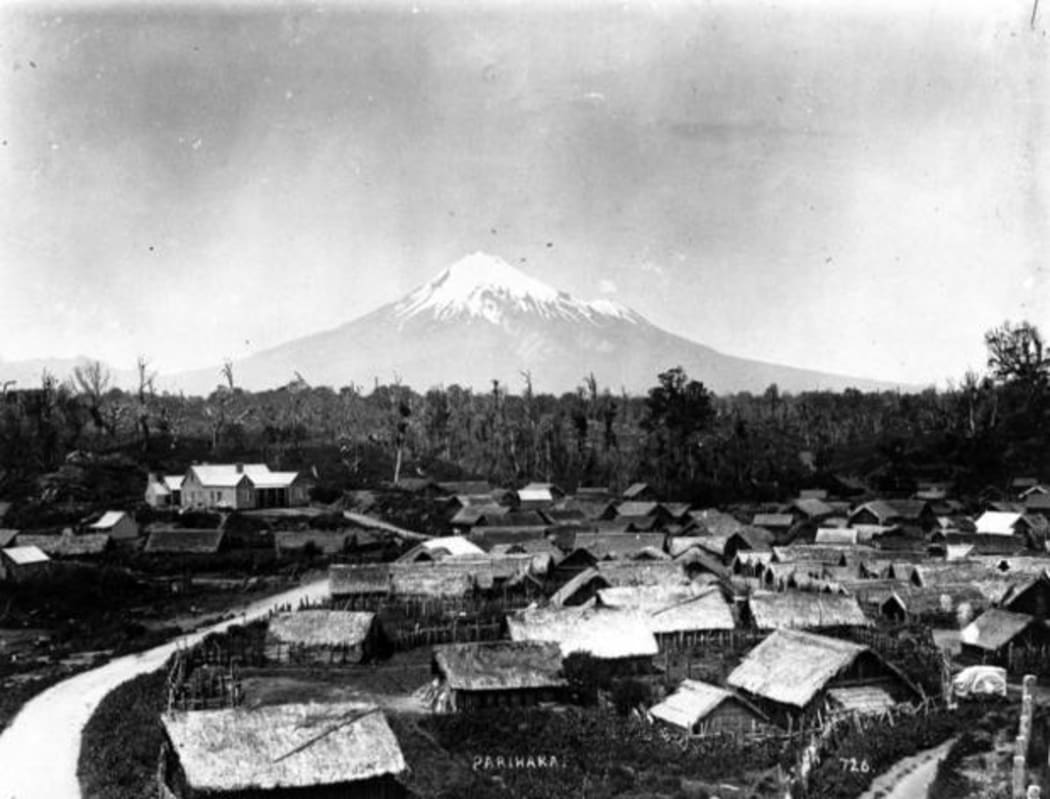One hundred and thirty-seven years ago, on 5 November 1881, a Māori settlement in the small Taranaki township of Parihaka was ransacked by colonial troops.
Dr Rachel Buchanan (Taranaki, Te Atiawa) has written a history of the Parihaka people woven into her own family story – Ko Taranaki te Maunga.

Dr Rachel Buchanan wrote the book Ko Taranaki te Maunga, published by BWB Books. Photo: RNZ/Justine Murray
Dr Buchanan talks to Justine Murray about her connection with Parihaka.
We also hear an archival recording of the late Te Miringa Hohaia talking about Taranaki leader Titokowaru and the impact that legislation had on the people of Parihaka.
Ko Taranaki te Maunga is a tribute to Dr Buchanan's father Dr Leo Buchanan (1941 – 2017) and her grandmother Rawinia, she says.
“The purpose of my book really is to chart, document and honour the journey of the mahi, the work of my dad and my grandmother to reconnect with who they were and where they were from.”
On 4 November, Dr Buchanan's family unveiled the headstone of her father, who was a well-known paediatrician and close friend of Dr Tony Ruakere.
Both men are part of the legacy of Māori doctors from the Taranaki area that includes Te Rangi Hiroa and Maui Pomare.

Parihaka Pa, circa 1900, with Mount Taranaki - taken by an unidentified photographer. Photo: Union Steam Ship Company of New Zealand / Alexander Turnbull Library
She travelled back to New Zealand to attend the unveiling at Opau Cemetery and on 5 November will give a public talk in Wellington about the history of Parihaka, alongside Mahara Okeroa.Dr Rachel Buchanan is a journalist and writer based in Melbourne with three teenage children.
Ko Taranaki Te Maunga grew from an essay that Buchanan wrote for the Māori historical journal Te Pouhere Kōrero.
The late historian and leader Te Miringa Hohaia had approached Buchanan to look at the apologies made by the government to the people of Parihaka that began in the early 1990s.
“I started thinking about the apologies – what did they mean? were they any good? Waiata (songs) I looked at, the English translation was terrible. The shame is so great it can never end.”

Armed Constabulary units at Parihaka, 1881 Photo: Alexander Turnbull Library, Parihaka Album Reference: PA1-q-183-19
In 2017, Taranaki Iwi and the Crown undertook the signing of He Puanga Haemata – a Deed of Reconciliation for the atrocities that occurred at Parihaka in 1881.
Dr Buchanan didn’t attend the ceremony because at the time her father’s health was in rapid decline.
“One of the main themes of the book is whakama, or shame, and really exploring how powerful it has been in terms of Parihaka identity. By that, I mean shame of the total land loss, the language loss, the loss of so many leaders, the death of so many people.”
Dr Buchanan's research was guided by Mahara Okerua, who grew up at Parihaka Pa.
“Actually my book is one way of answering that question - who am I? where am I from? And who can I speak for?
Dr Rachel Buchanan's PhD was inspired by an exhibition at Wellington's City Gallery in 2000, called Parihaka the Art of Passive Resistance.
In 2009 she released the book The Parihaka Album: Lest We Forget based on the history of Parihaka with perspectives from family members.

